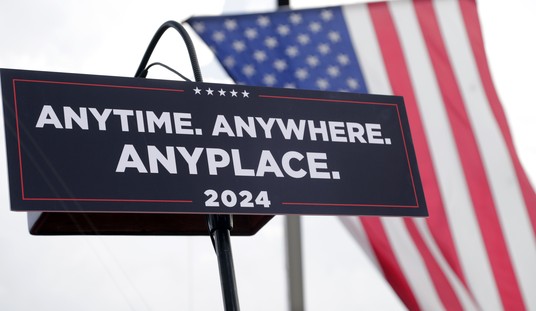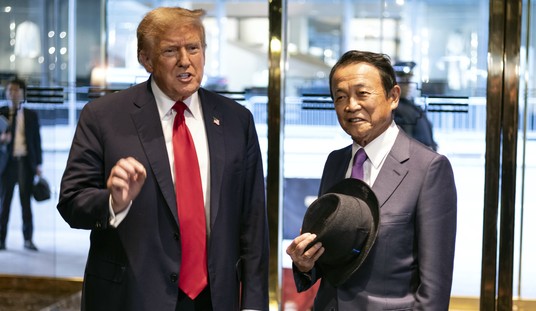Last month, the durable goods report looked disastrous for Barack Obama’s re-election effort, coming in with a 13.1% decrease in a single month, one of the worst reports in the last several years. Today, the Obama administration got better news from the Census Bureau, but not entirely great, as the September report on durable goods showed that the US gained about two-thirds of the drop back:
New orders for manufactured durable goods in September increased $19.6 billion or 9.9 percent to $218.2 billion, the U.S. Census Bureau announced today. This increase, up four of the last five months, followed a 13.1 percent August decrease. Excluding transportation, new orders increased 2.0 percent. Excluding defense, new orders increased 9.1 percent. Transportation equipment, up five of the last six months, had the largest increase, $16.8 billion or 31.7 percent to $69.6 billion.
On top of this, the news from the Department of Labor was, well, rather dull. Weekly jobless claims held at about the four-week average, suggesting that the mechanical issues with reporting the last two weeks have disappeared and that nothing much has changed in the labor market:
In the week ending October 20, the advance figure for seasonally adjusted initial claims was 369,000, a decrease of 23,000 from the previous week’s revised figure of 392,000. The 4-week moving average was 368,000, an increase of 1,500 from the previous week’s revised average of 366,500.
The advance seasonally adjusted insured unemployment rate was 2.5 percent for the week ending October 13, unchanged from the prior week’s unrevised rate. The advance number for seasonally adjusted insured unemployment during the week ending October 13 was 3,254,000, a decrease of 2,000 from the preceding week’s revised level of 3,256,000. The 4-week moving average was 3,269,750, a decrease of 6,750 from the preceding week’s revised average of 3,276,500.
Both reports show a status-quo economy that hasn’t really gained or lost all that much since the summer — and in the weekly jobless claims data, hasn’t moved significantly in any direction since the spring of 2011. These are indications of continuing stagnation at a very low level of growth.
Boosting that impression, as CNBC reports fairly deep into its article on both economic indicators, is the news that business investment isn’t picking up at all:
The Commerce Department said on Thursday that non-defense capital goods orders excluding aircraft, a closely watched proxy for business spending plans, was unchanged last month at $60.3 billion. That was short of economists’ expectations for a 0.7 percent gain.
Many economists believe companies are holding back investments due to fears the U.S. Congress could fail to avert sharp tax hikes and spending cuts in 2013, which threaten to send the U.S. economy back into recession.
It’s more than just the fiscal cliff, though, that’s holding back investors, although that’s a big, big part of it. The Washington Post wrote yesterday about the year-long evaporation of capital investment, well before the fiscal cliff became acute. In fact, we have seen a 15% drop in capital investment in 2012, accelerating into the third quarter:
The recession brought venture capital investments to their lowest point in a decade as investors hit the breaks on new deals, using their money instead to keep existing businesses afloat.
Although the past two years have seen the venture industry gradually regain its footing, figures still hover well below pre-recession levels. And if the latest reports are any indication, a complete recovery may be a distant goal.
U.S. firms collected $6.9 billion in 820 venture capital deals during the third quarter of the year, a 32 percent drop in dollar value and 9 percent decline in number of deals compared with the same period last year, according to a Dow Jones VentureSource report released last week.
The year-to-date numbers are less drastic. Dow Jones VentureSource tallied $22.8 billion raised by U.S. companies in 2,525 deals thus far into 2012, a 15 percent decline in dollars and 3 percent slide in deals compared with the first nine months of 2011.
I’d bet this trend started about the time that Barack Obama declared class warfare on capital investors in September 2011. The slow growth in the US economy shows investors less willing to take risks here since then.
Friday, the Commerce Department will release its advance Q3 assessment of economic growth. I’d guess that it will hit around 1.7% – 2.0% with this data, with some potential downside.








Join the conversation as a VIP Member